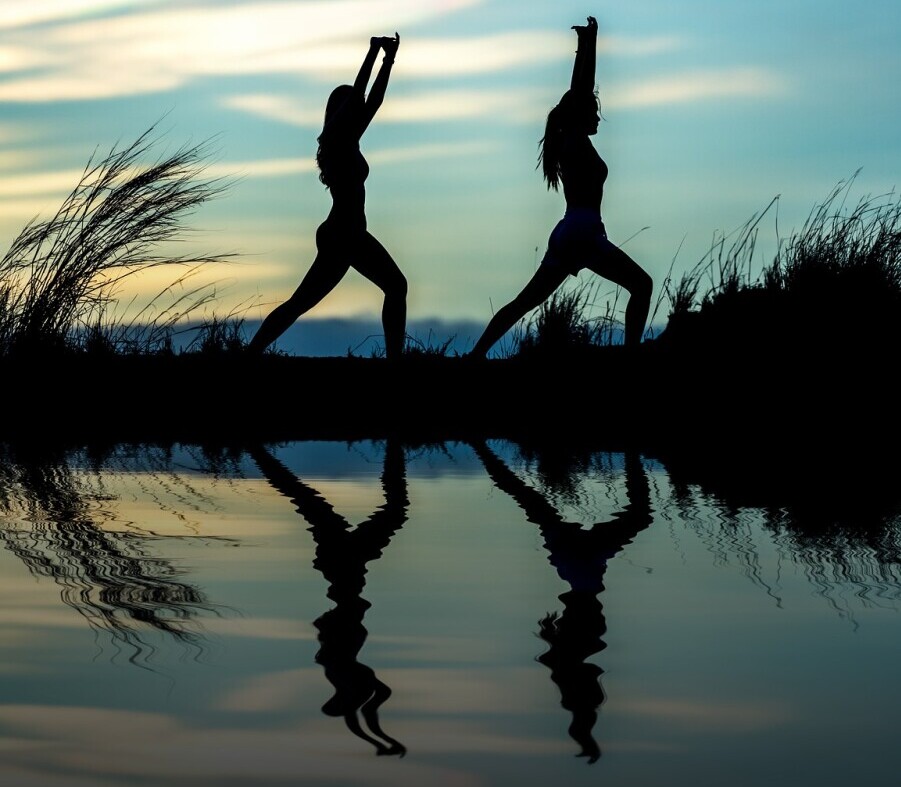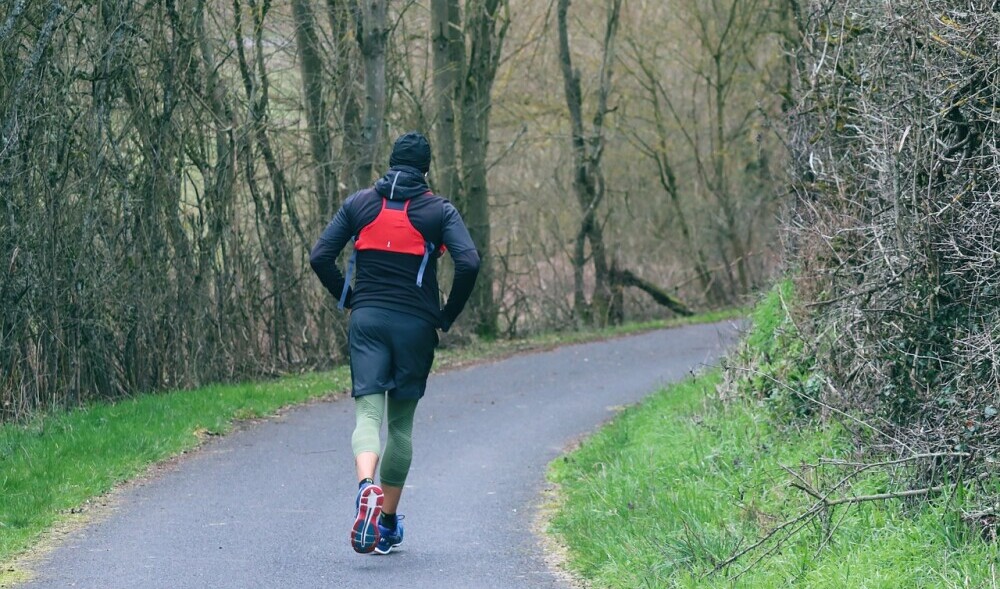Running is my favorite form of cardiopulmonary exercise. It offers benefits for both the mind and body. For beginner runners, one of the most common questions is, “Is it important to warm up before running?” In this article, I will explain why a proper warm-up routine is essential and what kind of exercises provide a good warm-up.

The Importance of Warming Up Before Running
A proper warm-up gets your body ready for the physical effort of running – I never skip my warm-up. The basic idea is to gradually increase your heart rate, improve circulation, and loosen and warm your muscles reducing muscle stiffness and injuries. Over time, regular warm-ups could not only make your runs more effective but also reduce the chance of strains and injuries.
Many athletes experience that a good warm-up gives a boost to their overall performance. By slowly activating your muscles, you also prime your nervous system, which can result in better coordination and form during your run. Whether you are new to running or a seasoned runner, taking time to warm up can help you enjoy running and reduce the negatives associated with vigorous exercise.
The Role of Stretching Before Running
Stretching is often confused with warming up, but it is different and plays its own role in preparing the body. Before you run, dynamic stretching is generally more beneficial than static stretching.
Dynamic stretches involve fluid movements that gently exercise the muscles and mimic running motions. For example, leg swings or torso rotations are effective ways to prepare the body. These types of stretches can increase blood flow to your muscles, increase flexibility, and help you mentally prepare.
Static stretching involves holding a stretch for several seconds, this stretching as well as using a Runner Foam Roller is usually reserved for after your run when muscles and connective tissues are very warm and more pliable and helps with recovery. However, some runners incorporate light static stretches into their warm-up routine if they feel extremely stiff. To sum up, a mix of dynamic stretches tailored to your running style often works best before a run to ensure that your muscles are ready.
Effective Warm-Up Techniques for Running
Understanding the types of warm-up exercises that work best for running can make your routine both effective and enjoyable. For a thorough warm-up, consider a few key exercises.
First, start with light aerobic activity. This could be as simple as walking briskly to get your legs and arms moving and your heart pumping gradually. Walking makes your muscles aware of the activity, warming them up slowly.
After a few minutes of walking, incorporate dynamic stretches. Exercises such as high knees, butt kicks, and leg swings come naturally and simulate the movements you will be doing during your run. Taking those extra moments to warm-up can help reduce the shock of sudden exercise and prepare both muscle and mind for what comes next.
The warm-up process is essentially a transition phase between an inactive state and the demands of running. If you give your muscles a chance to gradually build up to a more intense level of activity, it can lead to less discomfort during your run and fewer aches afterward.
How Long Should Your Warm-Up Be?
“How long before running should I warm-up and for how long”
On cooler days muscles respond well to a bit more time to adjust to the temperature. Some runners find that a longer warm-up routine prepares them mentally and helps them focus on the upcoming session. Adjusting the warm-up based on these conditions can improve not only comfort during the run but also overall performance.
For a shorter run or when performing a quick workout, you might be able to shorten the warm-up routine a bit. The key is to listen to your body and assess whether you feel sufficiently prepared.

Is Walking a Good Warm-Up?
The answer is yes. A moderate to brisk walk is one of the simplest ways to start preparing your workout. When you begin with a short walk, your muscles start to generate heat, and your joints self-lubricate. This kind of gradual start is particularly beneficial if you’re new to running or coming back after a period of inactivity.
Walking gives you the chance to ease into the movement without overwhelming your muscles or joints. It sets the stage for higher-intensity movements that follow and reduces the risk of injuries. Many experienced runners say that they always incorporate a short walk, regardless of how light their overall exercise might be.
The simplicity of walking makes it accessible to everyone. It doesn’t require any special preparation, equipment, knowledge or an advanced fitness level, which is why it is often considered the foundation of a good warm-up. When combined with dynamic stretches after the walk, it benefits your warm-up routine, ensuring that you are both physically and mentally prepared to run.
Is It OK Not to Warm Up?
Even though a warm-up brings many benefits, some runners skip this step, especially on short or infrequent runs. I used to be guilty of this because I wanted to save time. If you’ve ever bypassed your warm-up because you were in a hurry, you might have noticed more muscle tightness, I sure did. While it is possible to run without warming up, doing so can increase the risk of muscle strains and may affect your performance.
Over the long term, consistently missing out on a warm-up routine may also limit your overall ability to run effectively. Many experts recommend that even on days when you’re running a shorter distance, taking even a few minutes to warm up gives your body an advantage to perform at its best.

Additional Benefits of a Complete Warm-Up
Beyond the immediate physical advantages, a complete warm-up routine also provides long-term benefits that many runners overlook. A warmup allows your muscles to slowly wake up and you may notice a reduction in stress levels and a heightened sense of readiness. Many runners have found that by consistently performing a warm-up, they not only avoid injuries but also enjoy a more sustainable and balanced running experience. This attention to preparation nurtures a positive mental state and exercise habit to last a lifetime.
Final Thoughts on Warm-Ups and Running
Warming up before running is not a step to be skipped lightly. It forms the foundation that prepares your body for the physical demands ahead. From the importance of gradually increasing your heart rate to focusing on dynamic stretching and mindful movement, the benefits of a proper warm-up are numerous. By investing a little time at the start, you can enhance your performance, reduce the risk of injuries and increase your enjoyment.
Bottom line. A well thought out warm-up routine not only gives you a physical advantage but also primes you mentally for the challenges ahead. By listening to your body and adjusting your routine based on the day’s needs, you can make every run a smoother, more enjoyable adventure. Taking those extra few minutes shows you really care about your health and performance, making your running experience richer and more rewarding.


This was such a helpful and encouraging post—thank you for writing it! As a mom who’s slowly getting back into a fitness routine, I found your point about starting with a brisk walk especially reassuring. Sometimes I feel like I need to dive straight into running to make it count, but your explanation reminded me that easing in can actually protect my body and improve performance. I’m definitely going to start incorporating walking as a warm-up. Do you have a go-to warm-up routine you personally follow before your runs?
Hi Alice,
Whatever you need to do to stay with your exercise routine and your commitment to your health and fitness is what you should do. To that end, ALL YOUR RUNS COUNT, regardless of if it included some walking – so what. I find it helpful to remember I am only competing with my previous run – nothing, and no one else. If you try to push too hard you may incur an injury or other problem that could derail your goals, so just stay with it and relax knowing you are making progress and being true to yourself.
Back when I was 53, I had to have a surgery and then undergo CA treatment. I could not run for nearly a year and I severely deconditioned. When I was able to resume my running and fitness, I noticed that I no longer had the resilience I did when I was younger. But by allowing myself to acknowledge this without giving up on myself was the key. I made the necessary adjustments. I can remember doing quite a bit of walking. I did not like it either, but I really did not like the alternative. I would run until I felt I could run no further, walk a while and then try to start running again. It took me over a month to get back to running the whole distance without stopping to walk, and I did not run as fast as before, but I did get there. So just keep going, inch-by-inch it’s a cinch.
My routine is very set. I always run in the morning because it is always too hot after about 10:00am – I live in Florida. So, I always start with taking my dog, Milo, for a walk, which can be more like a forced march. That’s my warmup, then I do a few stretches, and I am off. Walking briskly is a good warmup. Sometimes I will do some squat-thrusts if it is cooler out.
Thanks for reading my article and I am happy to know it encouraged you to keep exercising.
Kevin
Many people do skip warmups, especially young people with stronger bodies, but I definitely find that as I get older, it is crucial to warm up, otherwise it is much easier to injure yourself. Also your body feels so much better moving when it is warm and the muscles are loose. Even a good cool down is important, especially for runners. Stretching out those muscles keeps them pliable and you don’t feel so sore the next day.
Yes, young people can be very enthusiastic. I was when I was younger, and I was frequently impatient or just in a hurry. I am still enthusiastic about running, I love to do it.
But I am seasoned and older, and as you mention, self-care is much more important to me now and I am almost never in a hurry. I have been an avid runner for nearly 50 years, and I have had a few injuries. That is the worst because it can prevent any further running until you have recovered. So, I go to lengths to prevent injury.
I agree with you that getting into my run feels much better if I have warmed up which simply makes it more enjoyable. I also agree that a proper cool-down with static stretching feels great, prevents soreness and keeps me feeling limber and ready for tomorrows run.
Thank you for reading my article.
Kevin